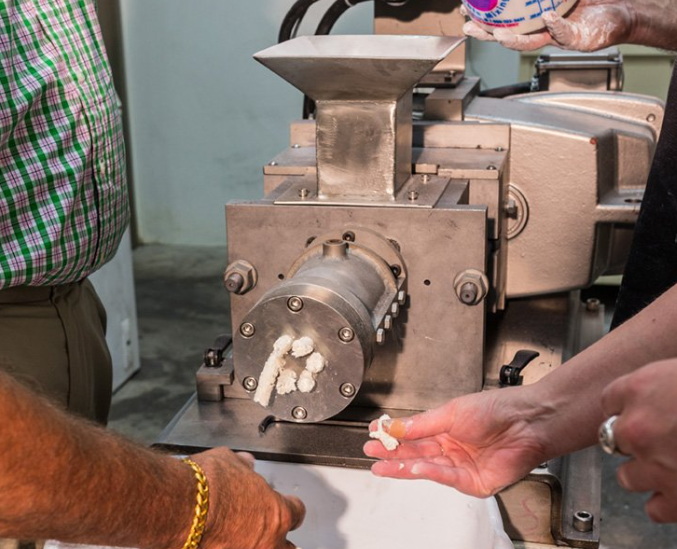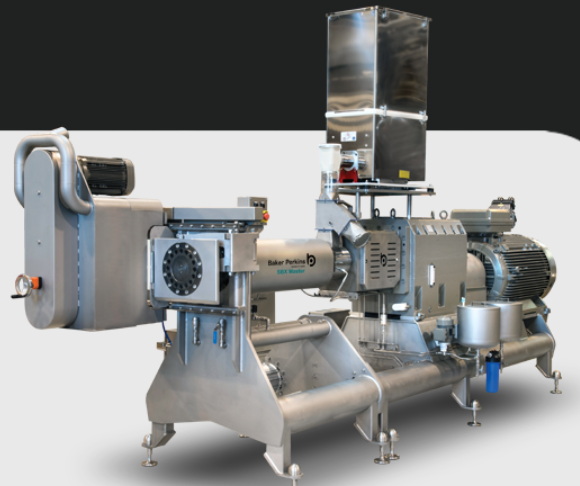Content Menu
● Introduction to Plastic Extrusion Machinery
>> Components of Plastic Extrusion Machinery
● How Plastic Extrusion Machinery Works
>> Innovations in Plastic Extrusion
>> Advanced Techniques in Plastic Extrusion
● Applications of Plastic Extrusion Machinery
>> Future Trends in Plastic Extrusion
● Challenges in Plastic Extrusion
>> Solutions to Common Challenges
● Benefits of Plastic Extrusion Machinery
>> Market Growth and Trends
● Conclusion
● FAQs
>> 1. What is Plastic Extrusion Machinery Inc?
>> 2. How Does Plastic Extrusion Machinery Work?
>> 3. What Are the Main Components of Plastic Extrusion Machinery?
>> 4. What Are the Common Applications of Plastic Extrusion Machinery?
>> 5. What Are the Benefits of Using Plastic Extrusion Machinery?
● Citations:
Plastic extrusion machinery is a crucial component in the manufacturing of various plastic products, including pipes, tubes, profiles, and sheets. Plastic Extrusion Machinery Inc is a term that could refer to companies specializing in the design, manufacture, and distribution of plastic extrusion equipment. These machines are essential for transforming raw plastic materials into continuous profiles with consistent cross-sections. In this article, we will delve into the workings of plastic extrusion machinery, its applications, and the benefits it offers to industries worldwide.

Introduction to Plastic Extrusion Machinery
Plastic extrusion machinery is designed to melt and form plastic materials into desired shapes. The process involves feeding plastic pellets into a hopper, which then enters a heated barrel where it is melted by a rotating screw. The molten plastic is then forced through a die, which shapes it into the required form. This process is widely used in industries such as construction, packaging, and automotive due to its efficiency and versatility.
Components of Plastic Extrusion Machinery
A typical plastic extrusion machine consists of several key components:
1. Hopper: This is where the raw plastic material, usually in pellet form, is loaded. The hopper feeds the material into the barrel of the extruder.
2. Barrel: The barrel houses the extruder screw and is equipped with heaters to melt the plastic. It is designed to withstand high pressure and temperatures.
3. Extruder Screw: This rotating screw carries the plastic pellets from the hopper to the other end of the barrel. Its rotation generates the necessary heat through friction to melt the plastic.
4. Heaters: These are located along the barrel and aid the screw in melting the plastic. They also help maintain the necessary temperature for extrusion.
5. Die: The die gives shape to the molten plastic. It is a customized part of the machine, specifically designed according to the profile of the product to be manufactured.
6. Cooling System: After being shaped by the die, the plastic needs to be cooled and solidified. This system may include fans, water baths, or cooling rollers.
7. Cutter: This component cuts the newly formed plastic into the required lengths. Depending on the product, the edge may be a simple guillotine, or it could be a more complex rotary cutter.
How Plastic Extrusion Machinery Works
The plastic extrusion process involves several stages:
1. Material Feeding: Plastic pellets are fed into the hopper, which then descends into the barrel.
2. Melting: Inside the barrel, the pellets are melted by the heat generated from the rotating screw and external heaters.
3. Mixing and Homogenization: The molten plastic is mixed and homogenized to ensure uniformity in temperature and composition.
4. Extrusion: The molten plastic is forced through a die, which shapes it into the desired form.
5. Cooling and Solidification: The extruded plastic is cooled and solidified using a cooling system.
6. Cutting: The final product is cut into the required lengths using a cutter.
Innovations in Plastic Extrusion
Recent advancements in plastic extrusion technology have significantly enhanced the process's efficiency and capabilities. One notable development is the integration of Industry 4.0 principles into extrusion machinery. This involves using smart sensors and IoT (Internet of Things) technology to monitor and control the extrusion process in real-time. Manufacturers can optimize production parameters, reduce downtime, and predict maintenance needs, improving overall productivity and reducing operational costs[2].
Another exciting advancement is the development of multi-layer extrusion techniques, which allow for creating products with varying properties in a single extrusion process. This technology enables manufacturers to produce films and sheets with barrier layers for enhanced performance, such as improved thermal resistance or mechanical strength. These multi-layer products are particularly valuable in the packaging and automotive industries, where specific material properties are essential for product performance[2].
Moreover, the introduction of advanced materials for extrusion has opened new avenues for innovation. Manufacturers can now work with high-performance polymers and composites, allowing for the production of lightweight, durable, and heat-resistant components. Bioplastics are also gaining traction due to the development of materials derived from renewable resources. These advancements meet industry demands and align with the growing emphasis on sustainability in the plastic industry[2].
Advanced Techniques in Plastic Extrusion
Several advanced techniques are being explored in plastic extrusion:
- Co-Extrusion: This process involves extruding multiple layers of materials simultaneously through a single die to create a composite structure. Co-extrusion allows for precise control over layer thicknesses and material properties, enabling the production of components with enhanced functionalities such as barrier properties, adhesion characteristics, or aesthetic features[1].
- Foamed Extrusion: Foamed extrusion involves injecting gas — typically nitrogen or carbon dioxide — into the molten polymer to create a cellular structure. This process reduces density, enhances thermal and acoustic insulation properties, and improves impact resistance[1].
- Microcellular Extrusion: Like foamed extrusion, microcellular extrusion creates a fine cellular structure within the polymer matrix. However, the cells formed are much smaller — typically in the micrometer range — which enhances properties like stiffness, toughness, and dimensional stability. This process is utilized in industries requiring lightweight materials with high performance, such as aerospace and electronics[1].
- 3D Printing Integration: Extrusion-based 3D printing, such as fused deposition modeling (FDM), is now used to create prototypes and end-use parts in industries like aerospace and medical device manufacturing. This hybrid approach enables the layer-by-layer fabrication of complex geometries using a wide range of thermoplastic materials, offering flexibility in prototyping and small-scale production[1].

Applications of Plastic Extrusion Machinery
Plastic extrusion machinery is used in a wide range of industries due to its versatility and efficiency. Some of the common applications include:
- Pipes and Tubing: Used in construction and plumbing for water supply and drainage systems.
- Profiles: Used in construction for window frames, door frames, and other structural components.
- Sheeting and Film: Used in packaging for wrapping products and in agriculture for greenhouse films.
- Wire and Cable Insulation: Used in electrical applications to insulate wires and cables.
- Automotive Components: Used in vehicle interiors and exteriors to reduce weight and enhance fuel efficiency.
Future Trends in Plastic Extrusion
The future of the plastic extrusion industry appears promising, driven by ongoing innovations and shifting market demands. One of the most significant trends is the increasing focus on sustainability within the plastics sector. As consumers and regulators call for more environmentally friendly practices, manufacturers are exploring biodegradable and recyclable materials suitable for extrusion processes. This shift is expected to reshape product development and create new opportunities for extrusion technology[2].
Another trend is the adoption of automation and smart manufacturing practices. Integrating artificial intelligence and machine learning into extrusion machinery enhances process control and optimization. Predictive maintenance, real-time monitoring, and data analytics can significantly improve operational efficiency and reduce waste. As these technologies become more accessible, manufacturers will be better positioned to meet the challenges of a competitive marketplace[2].
Lastly, the demand for customization and specialized products is on the rise. Consumers increasingly seek tailored solutions that meet their specific needs, which presents a unique challenge and opportunity for extrusion manufacturers. The ability to produce small batches of custom products without sacrificing efficiency will be a key focus area moving forward, leading to the development of more flexible and adaptable extrusion systems[2].
Challenges in Plastic Extrusion
Despite its advantages, plastic extrusion also presents several challenges:
- Insufficient Material Flow: Irregular material flow or blockages in the extrusion line can lead to production inefficiencies. Regular maintenance of the material feeding system and appropriate temperature and pressure settings can mitigate this issue[3].
- Uneven Product Quality: Fluctuations in product quality due to uneven temperature profiles in extrusion can be addressed by regular monitoring of temperature profiles and proper calibration[3].
- Material Degradation: Degradation or color changes in plastic material due to overheating can be prevented by maintaining ideal extrusion temperatures and using cooling systems suitable for the material type[3].
- Extruder Screw Wear: Wear or deformation of extruder screws can be minimized by using high-quality materials and regular maintenance[3].
Solutions to Common Challenges
To overcome these challenges, manufacturers should focus on:
- Regular Maintenance: Regular cleaning of filters, calibration, and checks of equipment can prevent many issues.
- Advanced Monitoring Systems: Implementing real-time monitoring systems can help identify and address problems promptly.
- Material Selection: Choosing the right material for the application is crucial to ensure product performance and durability[7].
Benefits of Plastic Extrusion Machinery
The use of plastic extrusion machinery offers several benefits:
- High Volume Production: Plastic extrusion allows for the continuous production of large quantities of plastic products.
- Versatility: It can produce a wide range of products with different shapes and sizes.
- Efficiency: The process is highly efficient, reducing production costs and increasing productivity.
- Consistency: It ensures consistent quality in the final products.
Market Growth and Trends
The plastic extrusion machine market is expected to grow at a CAGR of 4.7% between 2025 and 2035, driven by advancements in technology and rising demand for plastic products. The construction and automotive industries are leading this growth, with a focus on sustainable and lightweight materials[8].
Conclusion
Plastic extrusion machinery is a vital tool in modern manufacturing, enabling the production of a wide array of plastic products efficiently and consistently. Companies like Plastic Extrusion Machinery Inc play a crucial role in providing these machines to industries worldwide. Understanding how these machines work and their applications can help businesses optimize their production processes and expand their product offerings.

FAQs
1. What is Plastic Extrusion Machinery Inc?
Plastic Extrusion Machinery Inc refers to companies that specialize in the design, manufacture, and distribution of plastic extrusion equipment. These companies provide machinery used to transform raw plastic materials into continuous profiles with consistent cross-sections.
2. How Does Plastic Extrusion Machinery Work?
Plastic extrusion machinery works by melting plastic pellets in a heated barrel using a rotating screw. The molten plastic is then forced through a die, which shapes it into the desired form. The extruded plastic is cooled and solidified before being cut into required lengths.
3. What Are the Main Components of Plastic Extrusion Machinery?
The main components include the hopper, barrel, extruder screw, heaters, die, cooling system, and cutter. Each component plays a crucial role in the extrusion process.
4. What Are the Common Applications of Plastic Extrusion Machinery?
Common applications include the production of pipes, tubing, profiles, sheeting, film, and wire insulation. These products are used in various industries such as construction, packaging, and electrical.
5. What Are the Benefits of Using Plastic Extrusion Machinery?
The benefits include high volume production, versatility, efficiency, and consistency in product quality. These advantages make plastic extrusion machinery a preferred choice for many industries.
Citations:
[1] https://www.seagateplastics.com/shaping-the-future-innovations-in-plastic-extrusion-techniques/
[2] https://abhiplastics.com/revolutionizing-the-plastic-industry-how-plastic-extrusion-machinery-is-changing-the-game/
[3] https://deltaplastik.com/blog/challenges-and-solutions-in-plastic-extrusion-process
[4] https://www.transamshop.co.uk/blogs/news/future-plastic-extrusion-trends-2024
[5] https://www.wevolver.com/article/extruding-plastic
[6] https://www.machinedesign.com/3d-printing-cad/article/55248644/redetec-high-risk-high-reward-investing-in-game-changing-plastics-extrusion-technology
[7] https://www.inplexllc.com/blog/overcoming-common-challenges-in-plastic-extrusion-projects/
[8] https://www.globenewswire.com/news-release/2025/02/05/3021359/0/en/Plastic-Extrusion-Machine-Market-to-Grow-at-4-7-CAGR-During-2025-2035-Boosting-Global-Industry-to-USD-12-343-2-Million-by-2035-Future-Market-Insights-Inc.html
[9] https://jieyatwinscrew.com/blog/advanced-thermoplastic-extrusion-techniques-for-plastic-manufacturing/
[10] https://hunterplastics.com/trends-in-plastic-extrusion-technology
[11] https://www.bausano.com/en/press-and-news/common-problems-in-the-plastic-extrusion-process
[12] https://www.futuremarketinsights.com/reports/plastic-extrusion-machine-market
[13] https://www.lernermoldedplastics.com/the-comprehensive-guide-to-advanced-extrusion-techniques/
[14] https://jieyatwinscrew.com/blog/plastic-extruder-machine-manufacturers/
[15] https://www.ptonline.com/articles/extrusion-the-challenges-of-extruding-highly-filled-polymers
[16] https://www.professionalsuk.co.uk/article/business-management/82316/extruded-plastics-market-future-growth-industry-trends-and-demand-analysis-till-2031
[17] https://www.trelleborg.com/healthcare/-/media/tss-media-repository/healthcare-and-medical/pdfs/whitepaper-advanced-extrusion-techniques-en.pdf?rev=-1
[18] https://www.ptonline.com/articles/get-ready-to-be-blown-away-with-new-extrusion-technology
[19] https://www.alexandriaindustries.com/industry-news/overcoming-challenges-misconceptions-extrusion/
[20] https://www.inplexllc.com/blog/2023-plastic-extrusion-trends/






















